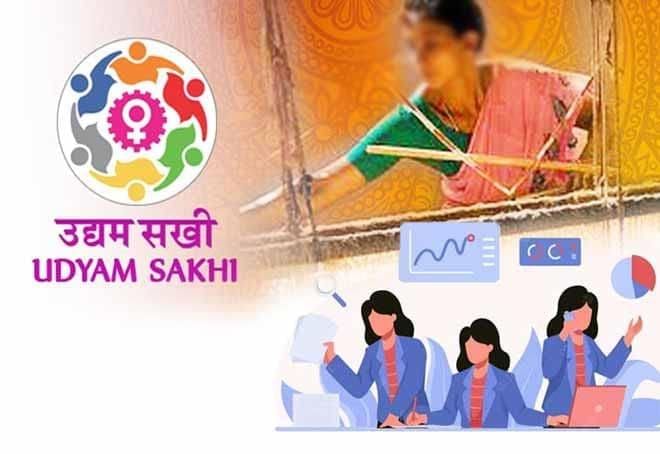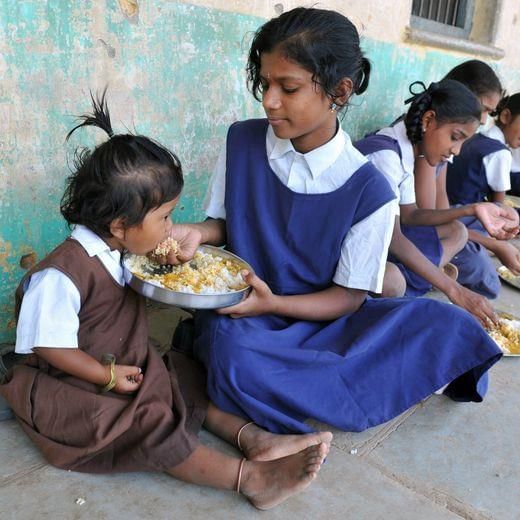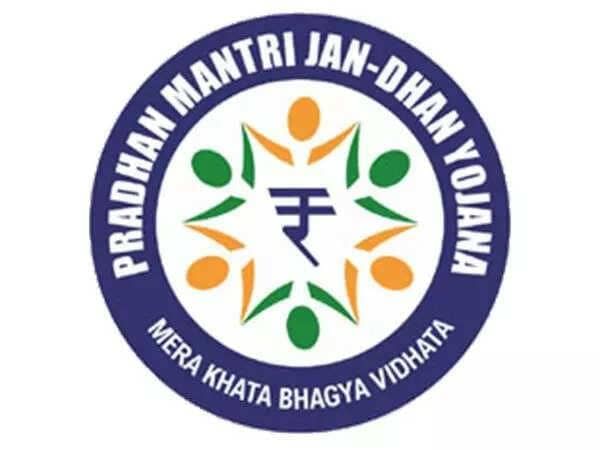UPSC Daily Current Affairs: 19th August 2025 | Current Affairs & Hindu Analysis: Daily, Weekly & Monthly PDF Download
GS1/Indian Society
Key Facts about Sahariya Tribe
Why in News?
A recent genetic study has uncovered a potential genetic link to the unusually high prevalence of tuberculosis (TB) within the Sahariya tribe of central India, highlighting their unique health challenges.
Key Takeaways
- The Sahariya tribe is classified as one of the Particularly Vulnerable Tribal Groups (PVTG).
- As of the 2011 Census, their population is approximately 600,000, residing mainly in Madhya Pradesh, Rajasthan, and Uttar Pradesh.
Additional Details
- Community Structure: The Sahariyas often live in clusters called Seharana, consisting of houses made from stone boulders and stone slabs, known locally as Patore.
- Cultural Practices: They maintain strong ties to the caste system, living in small joint families and primarily speaking local dialects, as they have lost their original language.
- Religion: The Sahariya tribe practices traditional ethnic religions while also incorporating Hindu values into their identity. They are known for their dance, Saharia Swang, performed during Holi.
- Livelihood: Predominantly forest dwellers, they rely on forest produce and cultivate small plots of land. They also migrate seasonally in search of better economic opportunities.
This information sheds light on the Sahariya tribe's socio-economic conditions and cultural practices, illustrating their unique identity and challenges in contemporary society.
GS3/Economy
PM Modi’s 12th Independence Day Speech - A Roadmap to Viksit Bharat
Why in News?
On August 15, Prime Minister (PM) Narendra Modi delivered his 12th Independence Day speech from the Red Fort. This address was notable for its visionary scope, bold reforms, and a long-term roadmap aimed at transforming India into a Viksit Bharat by 2047. The focus areas included next-generation reforms in the digital economy, energy security, national security, healthcare, taxation, and employment generation.
Key Takeaways
- Digital Sovereignty: Emphasis on India's digital leadership through initiatives like the Unified Payment Interface (UPI).
- Energy Security: Reduction of "No-Go" zones for hydrocarbon exploration and the launch of the National Deepwater Exploration Mission.
- Healthcare Innovation: India aims to lead the world in biopharma innovations and vaccine production.
- Tax Reforms: Introduction of a new Income Tax Bill and GST 2.0 to simplify compliance.
- Employment Generation: Launch of the PM Viksit Bharat Rozgar Yojana to empower youth.
Additional Details
- Digital India Stack: The UPI system accounts for 50% of global real-time digital transactions, showcasing India's digital prowess.
- Energy Exploration Initiatives: The National Deepwater Exploration Mission aims to unlock significant oil and gas reserves through innovative drilling techniques.
- National Critical Minerals Mission: India is exploring over 1,200 sites for essential minerals like lithium and cobalt, ensuring independence in technology production.
- Healthcare Achievements: India is recognized as the "pharmacy of the world," producing 60% of global vaccines.
- New Income Tax Bill: This bill simplifies the tax structure, reducing complexity by abolishing redundant sections.
- Employment Initiatives: The PM Viksit Bharat Rozgar Yojana aims to create jobs for approximately 3.5 crore young Indians.
The roadmap outlined in the Independence Day speech signifies India's commitment to transition from an ancient civilization to a modern power by integrating its rich heritage with progressive reforms. The goal is to achieve Viksit Bharat by 2047, positioning India as a technological, economic, and strategic powerhouse on the global stage.
GS3/Science and Technology
Primary Amoebic Meningoencephalitis (PAM)
Why in News?
Kerala’s health department has issued an alert in Kozhikode district following three consecutive cases of the rare and highly fatal disease known as Primary Amoebic Meningoencephalitis (PAM).
Key Takeaways
- PAM is caused by the amoeba Naegleria fowleri, often referred to as the "brain-eating amoeba."
- This infection thrives in warm freshwater environments, with optimal temperatures reaching up to 46°C (115°F).
Additional Details
- Entry Point: The amoeba typically enters the body through the nose during swimming or other water-related activities, subsequently traveling through the olfactory nerve to the brain.
- Impact: Once in the brain, the amoeba destroys brain tissue and causes severe swelling, leading to significant neurological damage.
- Transmission: PAM is not communicable from person to person.
- Symptoms: Initial symptoms include headache, fever, nausea, and vomiting, which can progress to stiff neck, confusion, seizures, hallucinations, coma, and ultimately death.
- Progression: Most cases lead to death within 1-18 days post symptom onset, as noted by the Centers for Disease Control and Prevention (CDC).
- Diagnosis and Treatment: Diagnosis is challenging due to its rarity and is confirmed via a Polymerase Chain Reaction (PCR) test of cerebrospinal fluid (CSF). PAM is often misdiagnosed as bacterial or viral meningitis, and there is no universally effective treatment. Management typically involves a combination of drugs such as amphotericin B, azithromycin, fluconazole, rifampin, miltefosine, and dexamethasone, as per CDC guidelines.
Awareness and prompt identification of PAM are crucial due to the rapid progression and high fatality rate associated with this disease. It is important for healthcare providers to consider PAM in patients presenting with neurological symptoms, especially in areas where the amoeba is prevalent.
GS2/International Relations
Alaskan Winds, India and the Trump-Putin Summit
 Why in News?
Why in News?
The recent meeting between U.S. President Donald Trump and Russian President Vladimir Putin on August 15, 2025, has been perceived as a pivotal moment regarding the ongoing Russia-Ukraine conflict. However, for India, this summit resulted in minimal advantages, highlighting its vulnerabilities and lack of influence in the U.S.-Russia discussions.
Key Takeaways
- The summit reinforced India's sense of vulnerability in U.S.-Russia relations.
- Expectations from the Modi government for relief from U.S. sanctions were unmet.
- Trump's policies appear to be driven more by political leverage over India than by consistent principles.
- India needs to rethink its diplomatic strategies to safeguard its interests.
Additional Details
- Outcome of the Summit: The Modi government had anticipated that improved U.S.-Russia relations might alleviate pressures on India regarding its ties with Moscow, particularly concerning sanctions on Russian oil imports and trade talks. However, the U.S. maintained its stringent stance against India, with officials emphasizing sanctions as a dual strategy to penalize both Russia and India.
- Strategic Autonomy: The sanctions imposed by the U.S. underline the risks of India deviating from its principle of adhering solely to UN-mandated sanctions, suggesting a need for India to uphold its economic independence and credibility.
- Lessons for New Delhi: The summit illustrates the dangers of prioritizing diplomatic appearances over substantive agreements. India needs to focus on establishing concrete frameworks and rebuilding bipartisan relations in Washington to navigate the complexities of international politics effectively.
- Future Engagements: Modi's upcoming diplomatic engagements in various countries present opportunities to strengthen alternative alliances and reduce dependency on U.S. approval.
In conclusion, the Alaska Summit serves as a reminder for India to ground its foreign policy in practical substance and strategic balance rather than getting swayed by high-profile diplomatic events. By doing so, India can better navigate the unpredictable dynamics of U.S. politics and protect its national interests.
GS2/Polity
When can Courts order a Recount of Votes?
Why in News?
The Supreme Court has recently recounted electronic voting machine (EVM) votes for the first time in its history, resulting in the overturning of an election outcome for a sarpanch in Haryana.
Key Takeaways
- Supreme Court's role in recounting votes.
- Legal framework for challenging election results.
- Eligibility and requirements for filing election petitions.
- Judicial standards for proving corrupt practices.
Additional Details
- Legal Framework for Challenging Election Results:
- For Parliamentary, Assembly, and State Council elections, challenges can be made through an election petition in the High Court of the respective state.
- Local government elections require petitions to be filed in district-level civil courts.
- Only candidates or electors involved in the election can file a petition, which must be submitted within 45 days of the election results being declared.
- Petition Requirements: Petitions must include a concise statement of material facts and specific allegations of corrupt practices, detailing names, dates, and locations.
- Judicial Approach: The Supreme Court treats allegations of corrupt practices as quasi-criminal, necessitating a high standard of proof. Vague petitions are typically dismissed.
- Grounds for Invalidating an Election: Courts can annul elections based on bribery, disqualification of candidates, improper acceptance/rejection of nomination papers, and non-compliance with constitutional or election laws affecting results.
- Recount of Votes: Courts may order a recount only if the petitioner presents specific material facts and evidence of probable counting errors. Recounts are usually conducted at the election site, with exceptions like the Panipat case where the Supreme Court recounted on its premises.
- Declaring a New Winner: While rare, courts can declare a new winner if evidence demonstrates that the petitioner or another candidate legitimately had a majority of valid votes or would have won if not for corrupt practices. This requires concrete evidence of tainted votes, as illustrated by the Supreme Court’s intervention in the February 2024 Chandigarh mayoral election.
In summary, the judicial system provides a structured process for challenging election results and recounting votes, emphasizing the integrity of the electoral process and the need for transparent evidence in disputes.
GS3/Environment
Palmyra Palm Tree
Why in News?
The Palmyra palm trees in Odisha are notable for their dual benefits: they help reduce lightning-related fatalities and serve as a crucial food source for elephants during lean seasons.
Key Takeaways
- The Palmyra palm, also known as sugar palm, toddy palm, or fan palm, is native to tropical Africa but is widely cultivated in India.
- These trees are primarily propagated through seeds and thrive in various soil types, particularly in sandy and red soils.
Additional Details
- Climatic Conditions: Palmyra palms adapt well to semi-arid regions with less than 750 mm of annual rainfall and can grow from sea level to altitudes of 800 meters.
- Benefits: They provide natural shelter for birds, bats, and wildlife. The sweet sap, known as toddy, is harvested from the inflorescence tip and is a popular local beverage.
- Palmyra palm jaggery (gur) is more nutritious compared to conventional cane sugar, making it a valuable product.
- The Indian Nadar community traditionally utilizes every part of the Palmyra palm for various products, including food, beverages, furniture, and handicrafts.
In conclusion, the Palmyra palm tree is not only significant for its ecological contributions but also plays a vital role in the local economy and culture.
GS3/Environment
How Does Plastic Pollution Affect Health?
Why in News?
Plastic pollution is increasingly recognized as a significant environmental and health crisis. Recent international discussions have highlighted the health implications of plastic exposure, reflecting a broader concern beyond mere waste management.
Key Takeaways
- Global negotiations failed to establish a binding treaty on plastic pollution, focusing now on health impacts.
- Plastics contain over 16,000 chemicals, with many posing unknown health risks.
- Microplastics have been found in various human tissues, intensifying health concerns.
Additional Details
- Global Plastic Treaty Deadlock: Despite a UNEP-backed resolution, the inability of 180 countries to agree on a treaty underscores deep divisions regarding the focus on waste versus production.
- Health Impacts: Plastics have been linked to serious health conditions, including thyroid dysfunction and various cancers, with studies indicating a broad range of potential health risks.
- Microplastics: Defined as plastics smaller than 5 mm, these particles have been detected in human blood and other tissues, raising concerns about their long-term health effects.
- Policy Responses: Countries like India are implementing bans on single-use plastics but often view the issue mainly as a waste management challenge rather than a health crisis.
The ongoing debate about plastic pollution emphasizes the urgent need for comprehensive policies that address both environmental and health impacts. The failure to act decisively reflects a significant gap between scientific evidence and political action, urging the necessity for a robust treaty that encompasses health considerations alongside production and waste management.
GS3/Economy
Udyam Sakhi Portal
 Why in News?
Why in News?
The Udyam Sakhi Portal has been launched by the Ministry of Micro, Small and Medium Enterprises (MSME) to support women entrepreneurs in starting, building, and expanding their businesses across India. This initiative aims to empower women and promote self-reliance.
Key Takeaways
- The Udyam Sakhi Portal was introduced in March 2018 by the Ministry of MSME.
- It provides essential information on financial schemes, policies, and programs tailored for women entrepreneurs.
- The portal serves as a network to foster entrepreneurship and develop business models for affordable products and services.
- Over 4,500 women entrepreneurs have registered on the portal so far.
Additional Details
- Entrepreneurship Support: The portal offers various services including entrepreneurship learning tools, incubation facilities, and training programs for fundraising.
- Mentorship Opportunities: Women entrepreneurs can access mentors and participate in one-on-one investor meetings to enhance their business prospects.
- The portal also provides facilities for market surveys and resources for learning and development through education and technical assistance.
In summary, the Udyam Sakhi Portal is a significant initiative aimed at empowering women entrepreneurs in India by providing them with resources, support, and opportunities to thrive in the business landscape.
GS3/Environment
What is Sliteye Shark?
Why in News?
For the first time, scientists have observed the sliteye shark in the Great Chagos Bank, located in the Indian Ocean, which is recognized as the world’s largest coral atoll.
Key Takeaways
- The sliteye shark is a small-bodied species found primarily in inshore waters of the Indo-West Pacific.
- It is the only member of its genus, Loxodon, belonging to the requiem shark family (Carcharhinidae).
Additional Details
- Scientific Name: Loxodon macrorhinus
- Distinctive Features: Named for its unique, slit-like eyes, which are believed to enhance vision in low-light environments. This adaptation allows the sliteye shark to thrive in deeper, dimly lit waters as well as clear and shallow areas.
- Geographical Distribution: The sliteye shark is widely distributed in tropical waters across the Indian and western Pacific Oceans, found between 34°N and 30°S, near the coasts of various countries including Australia, China, Djibouti, Egypt, and many others.
- Physical Characteristics: It features a slender body, a long narrow face, large eyes, and short furrows at the corners of its mouth. The sliteye shark can grow to a length of about 95 cm and has small teeth with protruding tips and smooth edges. The ridge between the dorsal fins is either absent or rudimentary.
- Coloration: The shark has a gray body with a white belly, and the edges of its fins are pale (appearing transparent when alive). The caudal and first dorsal fins are marked with dark edges.
- Conservation Status: According to the IUCN Red List, the sliteye shark is classified as Near Threatened.
This unique discovery highlights the biodiversity of the Great Chagos Bank and the importance of marine conservation efforts in the region.
GS3/Economy
Is the New Income Tax Law More Accessible?
Why in News?
In August 2025, the Parliament enacted the Income Tax Bill, 2025, which has significantly simplified the previous legislation by reducing its chapters and sections, aiming to enhance taxpayer experience while addressing concerns over privacy and surveillance.
Key Takeaways
- The new Income Tax Bill has 23 chapters and 536 sections, down from 47 chapters and 819 sections.
- It introduces extended timelines for updating tax returns and aims to reduce taxpayer harassment.
- However, it expands the powers of tax officials regarding access to digital information.
Additional Details
- Need for Overhauling the 1961 Income Tax Framework: The previous Income Tax Act had become outdated, leading to excessive complexity and potential for harassment by officials.
- Legislative Journey: The initial draft was introduced in February 2025 and underwent extensive review by a Select Committee. The final version was passed on August 11, 2025, to avoid confusion.
- Key Reforms: Tax rates and slabs remain unchanged, but provisions for Minimum Alternate Tax (MAT) and Alternate Minimum Tax (AMT) have been clarified.
- Taxpayer-Friendly Features: The law allows updates to returns within four years without penalties and reduces the assessment reopening period to five years.
- Concerns Over Surveillance: Enhanced powers for tax officials include the ability to demand access to personal digital data, raising privacy issues.
The Income Tax Bill, 2025 represents a significant reform in simplifying India's tax laws. While it introduces more taxpayer-friendly provisions, the increased surveillance capabilities for tax authorities create a potential conflict between efficiency and individual privacy rights. The challenge lies in ensuring that these reforms do not undermine public trust and constitutional protections.
GS2/Governance
India’s Role in Ending Global Hunger
 Why in News?
Why in News?
Global undernourishment is showing signs of decline after years of increase. According to the UN’s State of Food Security and Nutrition in the World 2025, around 673 million people (8.2% of the global population) were undernourished in 2024 — an improvement from 688 million in 2023. Although levels remain above pre-pandemic figures (7.3% in 2018), this reversal marks a crucial turning point in the fight against hunger. This article highlights India’s decisive role in reducing global hunger through its transformed Public Distribution System, nutrition-focused initiatives, and digital agrifood system reforms.
Key Takeaways
- India's undernourishment rate fell from 14.3% in 2020-22 to 12% in 2022-24.
- This indicates approximately 30 million fewer people living with hunger in India.
- The One Nation One Ration Card scheme has improved food access for migrant workers.
- India's focus has shifted from merely ensuring calorie sufficiency to promoting nutrition security.
Additional Details
- Transformation of India’s Public Distribution System (PDS): The PDS has seen significant improvements through digitalization, Aadhaar-enabled targeting, biometric authentication, and real-time inventory tracking, enhancing efficiency and transparency.
- Shift from Calories to Nutrition: Although calorie sufficiency has improved, over 60% of the population still finds a healthy diet unaffordable due to high prices for nutrient-rich foods.
- Progress and Structural Challenges: While healthy diets are becoming more affordable, malnutrition and micronutrient deficiencies are increasing, particularly among poorer urban and rural populations.
- Transforming India’s Agrifood System: Investment in post-harvest infrastructure and support for women-led enterprises and Farmer Producer Organizations (FPOs) is crucial for enhancing access to nutritious foods and improving rural livelihoods.
India’s advancements in its agrifood system serve as a global contribution, showcasing how hunger reduction can be achieved through political will and inclusive policies. With only five years left to meet the Sustainable Development Goals (SDGs), particularly SDG 2: Zero Hunger, India’s recent successes provide optimism for the global fight against hunger. Sustaining this momentum requires a comprehensive approach that addresses not only food security but also nutrition security, resilience, and opportunities for vulnerable populations.
GS3/Economy
Inoperative PM Jan Dhan Accounts: A Concern
 Why in News?
Why in News?
The Government has informed Parliament that 23% of the total 56.04 crore PM Jan Dhan Yojana accounts are currently inoperative. This raises concerns regarding financial inclusion and the effectiveness of the scheme.
Key Takeaways
- 23% of PM Jan Dhan Yojana accounts are inoperative.
- Scheme aims to enhance financial inclusion for the unbanked population.
About Pradhan Mantri Jan Dhan Yojana (PMJDY)
- Launch: Introduced in 2014 as the world's largest financial inclusion mission.
- Objective: To provide banking services to the unbanked, insurance to the unsecured, and credit to the unfunded.
- Accounts: Offers Basic Savings Bank Deposit (BSBD) accounts with zero balance, minimal paperwork, and e-KYC facility.
- Benefits: Includes a RuPay debit card with accident insurance, overdraft facility, micro-insurance, and pension coverage.
Key Features
- Access: Universal banking through bank branches and Business Correspondents.
- Overdraft: Up to ₹10,000 for eligible account holders.
- Insurance: Accident cover of ₹1 lakh (₹2 lakh for new accounts opened post-2018); life cover of ₹30,000 for accounts opened between August 2014–January 2015.
- Interoperability: Enabled via RuPay cards and Aadhaar-linked platforms.
- Post-2018 Expansion: Coverage now includes all unbanked adults, with enhanced overdraft limits and increased eligibility age from 60 to 65 years.
- Direct Benefit Transfers: Strengthened subsidy delivery through the JAM Trinity (Jan Dhan–Aadhaar–Mobile).
Did You Know?
- According to the Reserve Bank of India (RBI) guidelines (2009), an account is considered dormant if no transaction occurs for over two years.
UPSC Insight
Pradhan Mantri Jan-Dhan Yojana was launched to:
- (a) provide housing loans to poor people at cheaper interest rates
- (b) promote women’s Self-Help Groups in backward areas
- (c) promote financial inclusion in the country*
- (d) provide financial help to marginalized communities
This information highlights the importance of the PMJDY scheme in enhancing financial literacy and access to banking services in India.
|
49 videos|5376 docs|1137 tests
|
FAQs on UPSC Daily Current Affairs: 19th August 2025 - Current Affairs & Hindu Analysis: Daily, Weekly & Monthly
| 1. What are the key characteristics and cultural practices of the Sahariya tribe? |  |
| 2. What are the challenges faced by the Sahariya tribe in contemporary society? |  |
| 3. How does the Indian government support the Sahariya tribe? |  |
| 4. What is the significance of the Sahariya tribe's oral traditions? |  |
| 5. What role does agriculture play in the livelihood of the Sahariya tribe? |  |
















